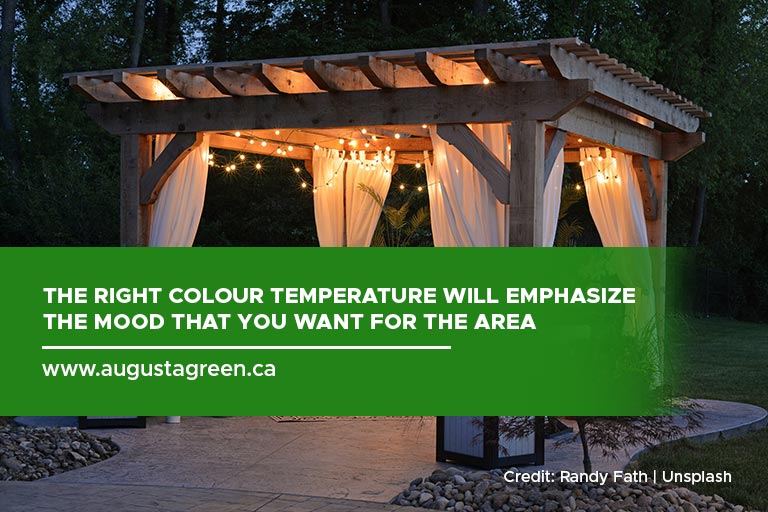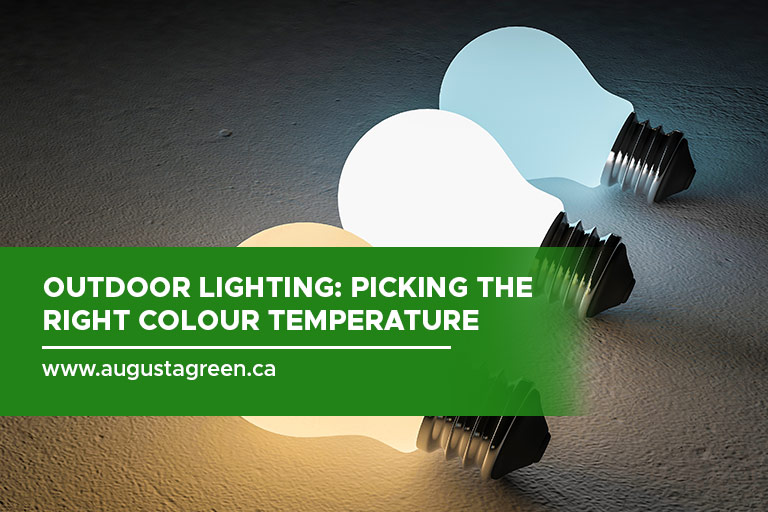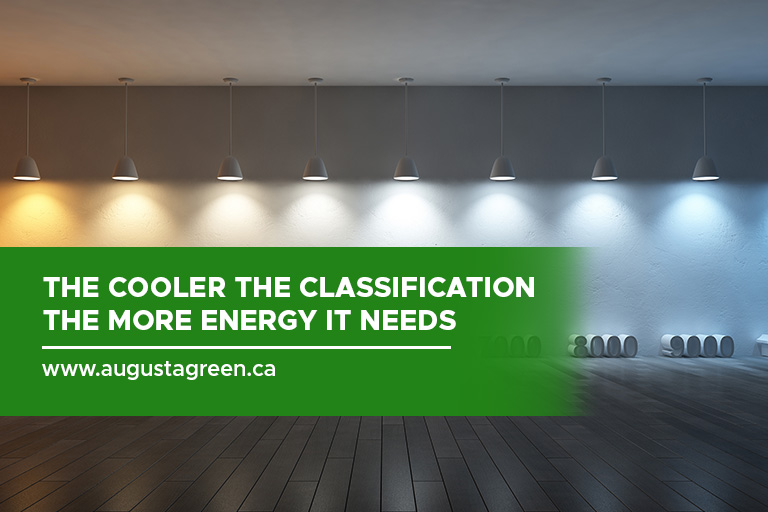The home lighting industry now offers a wide range of fixtures to fit any style, theme, and preference. Homeowners now have more freedom in selecting the perfect lighting designs and lighting temperatures for their property, depending on their location and function.
Lighting can greatly affect the mood and ambiance of an environment. Some lighting fixtures and options may be more suited for outdoor lighting, others for indoors, and some for bathroom use only. This is why before you install these fixtures you have to create a home lighting plan to determine what kind of bulbs and colour temperatures you need for each location.
An expert in landscape lighting can help you plan and install your fixtures. Before you start, here are some basic outdoor lighting facts that you need to know.
What Is Colour Temperature?
Colour temperature refers to the measure of heat energy emitted by light sources, which affects the overall colour and mood. This is based on the electromagnetic spectrum of visible light, wherein warmer colours that have longer wavelengths include colours like orange and yellow while those with shorter wavelengths are cooler and appear bluish.
For pictorials, this metric is crucial to help photographers create a balanced and neutral shooting environment for their subjects. However, when it comes to outdoor lighting, colour temperature, which is often measured in Kelvin (K) helps landscape artists and interior decorators to manage the light cast by your property.
A warmer lighting colour temperature often means less energy being utilized. These colours emit lower wave frequencies compared to cooler lighting. Cooler lighting often emits higher energy due to the significantly increased frequency of the colour blue.
If installed in a narrow space, this temperature won’t easily be noticed, especially if the bulbs appear white. However, when they’re placed in an outdoor space, where light can scatter more widely, change in colours will be more noticeable, which can affect the overall mood of your home and garden.
Importance of Colour Temperature
The higher the amount of energy emitted by a light source, the bigger the frequencies it will produce, and the cooler its tones will be. If these conditions are flipped, then it would lead to a warmer colour that requires less energy.
Picking the right colour temperature for your home’s interior and exterior is a vital step in design and management. Since human biology reacts actively to subtle changes in lighting, depending on where they’re placed, a warmer or cooler bulb could induce sleepiness, alertness, or comfort. This is why, when creating the floor plans for your home, lighting should be planned with it as well, since it can actively affect the space you’re building.
When placed strategically, these lighting angles could also widen the space or narrow down the depth of an area. It can also affect the overall temperature of the area as cooler lighting may emit more heat and cause the area to get warmer as well. On the other hand, warmer lighting can emit lower energy and heat, thus creating a cooler environment.
Colour Temperature Scale
To give you a better idea of the available choices during landscape lighting installation here is a quick run-through of the standardized colour temperature scale used by interior and landscape decorators:
- Cool White
Imitating the hazy and romantic glow of the moon, cool white lighting that has a temperature of 4000K to 4200K emits a bluish tint. Cool white has a relaxing wavelength that makes it perfect for gardens and trees to make them look more visually pleasing.
With the shade that it creates, it can perfectly accentuate the shadows of vines and leaves, making the garden more whimsical than it appears to be.
- Natural White or Warm
With a temperature of 3000K, this lighting is still classified as cool and emits a natural white glow. However, due to its significantly lower range of light frequency, this choice has a warmer ambiance when compared to other cool-toned lights.
Due to its still considerable high heat production, it would be better if you utilize LED alternatives rather than halogen or incandescent ones that may burn your garden.
- Warm White
Welcoming, warm, and friendly, this 2700K lighting choice is the most commonly preferred option of business owners and homeowners alike for their outdoor space. With its softer glow, it creates a more inviting atmosphere around your offices or homes. The perfect location for its fixtures is the entrance of buildings and houses.
- Very Warm White
With the least amount of heat energy emitted of 2200K, the very warm white lighting option is the best colour temperature for outdoor spaces that requires a mellow atmosphere.
This light source tends to be low-key and creates a romantic, candlelit atmosphere for your garden. And, due to its relaxing ambiance, it’s a perfect match for outdoor spas and garden fireplaces, where everyone can sit down and feel relaxed.
Outdoor Lighting Tips

Trying out a new outdoor lighting upgrade for your home and garden can seem daunting at first especially if you’re unsure of how it would affect the overall mood and ambiance of the environment. However, there’s no need to worry because you can be more guided by these outdoor lighting tips:
- Garden area
The best option for garden areas is natural whites with a colour temperature of 3000K to 4000K, which gives a vibrant look to your plants. - Entertainment area
Relaxing and inviting, entertainment spaces should have warm lights with a temperature of range of 2000K to 3000K. - Emphasize outdoor features
Highlighting garden and lawn features is best achieved with a 2000K to 3000K lighting range that is warmer and serene to the eyes. - Home exteriors
Home exteriors should utilize colonial-style lighting fixtures with a warmer colour temperature range to make the entrance more inviting and elegant. - Creating moonlight effect
Light with a temperature of 4000K will give you the moonlight effect. It imitates the natural, hazy glow of the moon, covering your garden with cool shadows and a whimsical aura.
 Choosing your home’s lighting colour temperature is a design technique used by lighting experts and artists. This technique will alter the ambiance and shadows of your lawn or garden to make it look more inviting. Invest in good bulbs to achieve the perfect lighting temperature for your property.
Choosing your home’s lighting colour temperature is a design technique used by lighting experts and artists. This technique will alter the ambiance and shadows of your lawn or garden to make it look more inviting. Invest in good bulbs to achieve the perfect lighting temperature for your property.
If you need landscape lighting installed, Augusta Green Sprinklers is the answer to your landscape lighting needs. Call us now at (416) 227-1666 for a free estimate.



